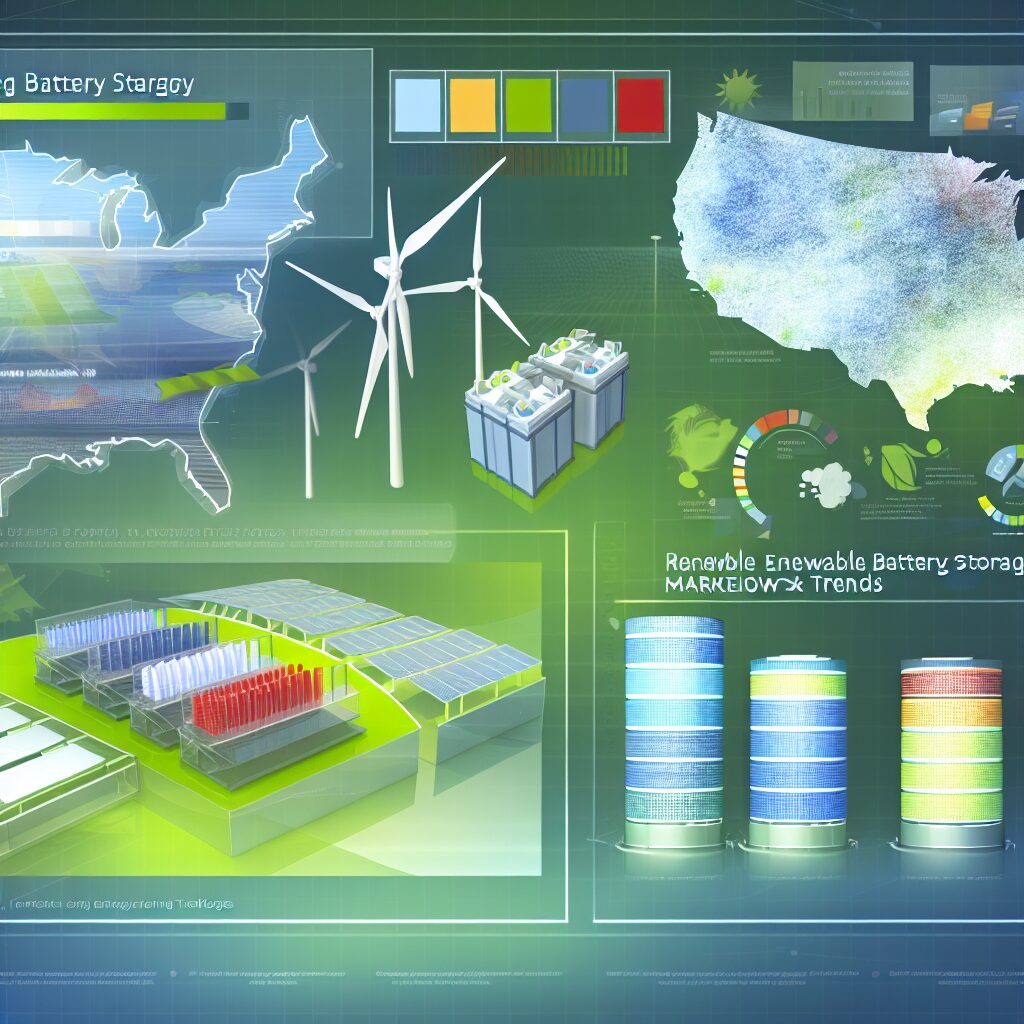US Renewable Battery Storage Market Analysis by Type: Overview & Trends
The renewable battery storage market in the United States has seen significant growth and development over recent years. This article provides an analysis of the different types of battery storage systems and the current trends shaping the market.
Lithium-Ion Batteries: Dominating the Market
Lithium-ion batteries have emerged as the leading technology in the US renewable battery storage market. Known for their high energy density, efficiency, and long cycle life, these batteries are widely used in various applications including residential, commercial, and utility-scale projects. The decreasing cost of lithium-ion batteries has also played a crucial role in their widespread adoption.
Aluminium-ion Batteries: Growing Interest
Aluminium-ion batteries represent another growing segment within the renewable battery storage market. These batteries offer advantages such as safety and cost compared to traditional lithium or LFP batteries. Although they currently hold a tiny market share compared to lithium-ion batteries, ongoing research and development efforts are continue to enhance their commercial viability.
Sodium-Sulfur Batteries: Niche Applications
Sodium-sulfur (NaS) batteries are primarily utilized in large-scale energy storage applications. They are known for their high energy capacity and durability. However, their high operating temperatures and associated safety concerns limit their use to specific niche markets where these characteristics are advantageous.
Lead-Acid Batteries: Traditional Yet Relevant
Despite being one of the oldest battery technologies, lead-acid batteries continue to be relevant in the renewable energy storage market. They are often used in off-grid and backup power applications due to their reliability and low cost. Recent advancements in lead-acid battery technology have improved their performance and extended their lifecycle, maintaining their competitiveness in certain segments.
Trends Shaping the Market
Several key trends are influencing the growth and direction of the US renewable battery storage market:
1. Policy Support and Incentives
Government policies and incentives at both federal and state levels are driving the adoption of renewable battery storage systems. Programs such as tax credits, grants, and rebates make it more financially feasible for businesses and homeowners to invest in battery storage solutions.
2. Technological Advancements
Continuous innovation in battery technology is enhancing the performance, safety, and affordability of storage systems. Breakthroughs in materials science and manufacturing processes are contributing to the development of next-generation batteries with higher capacities and longer lifespans.
3. Integration with Renewable Energy Sources
The integration of battery storage systems with renewable energy sources like solar and wind is becoming increasingly common. This combination allows for better management of energy generation and consumption, reducing dependency on fossil fuels and enhancing grid stability.
4. Increasing Demand for Grid Resiliency
As the frequency and severity of natural disasters increase, there is a growing demand for resilient energy storage solutions that can provide backup power during outages. Battery storage systems are being installed to ensure continuous power supply in critical infrastructure and residential areas.
5. Declining Costs
The cost of battery storage systems has been steadily declining, making them more accessible to a broader range of consumers. Economies of scale, improvements in production techniques, and increased competition among manufacturers are driving down prices.
Conclusion
The US renewable battery storage market is evolving rapidly, driven by technological advancements, supportive policies, and increasing demand for sustainable energy solutions. While lithium-ion batteries currently dominate the market, other technologies like aluminium-ion batteries and sodium-sulfur batteries are gaining traction. As costs continue to decrease and performance improves, the adoption of renewable battery storage systems is expected to expand further, playing a crucial role in the transition to a cleaner and more resilient energy future.
Analyzed and outlined by ChatGPT-4o, images by DALL·E 3.
Source
United States (US) Renewable Battery Storage Market327078 By Type

